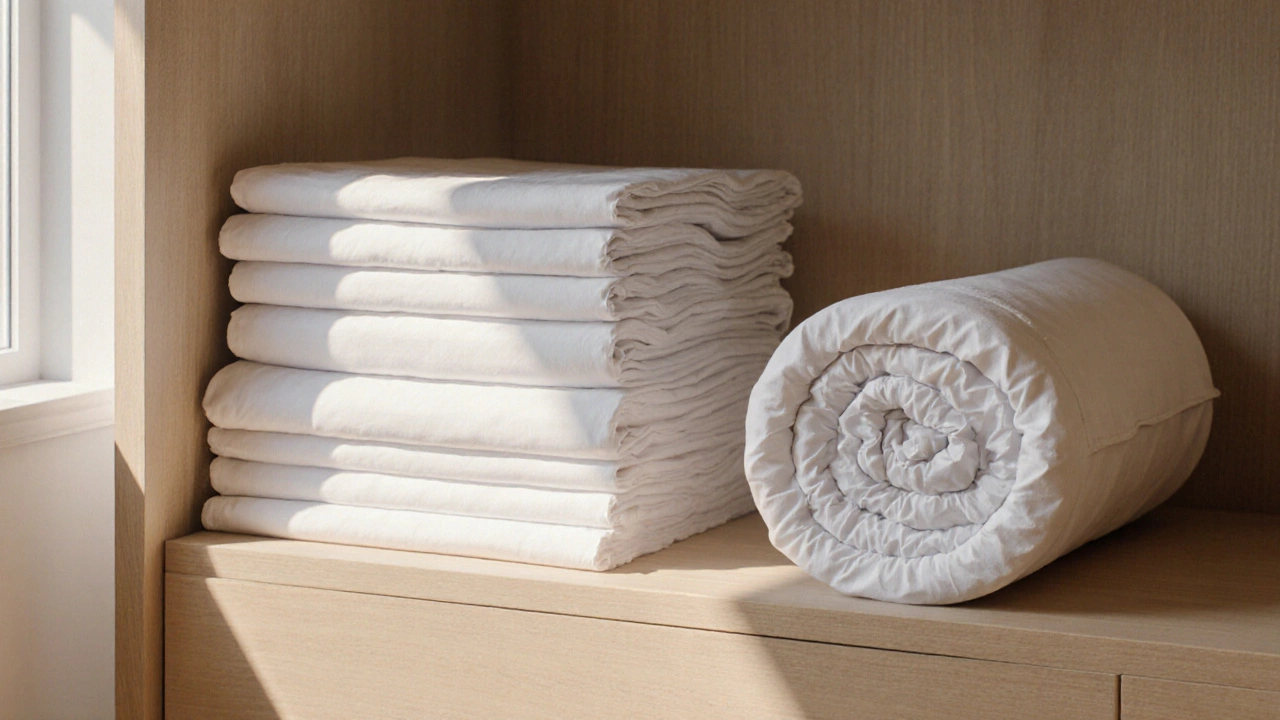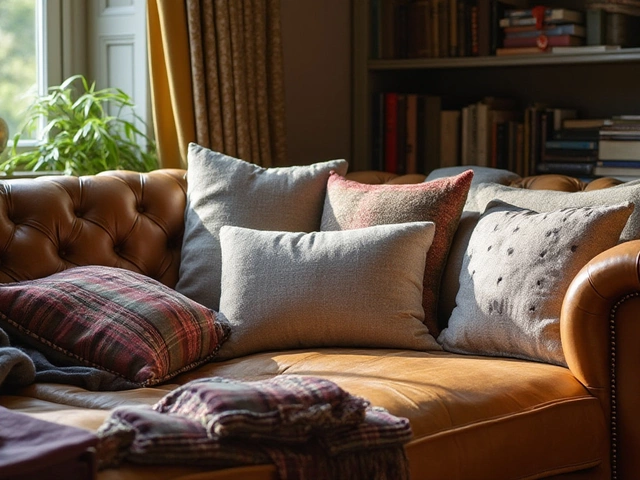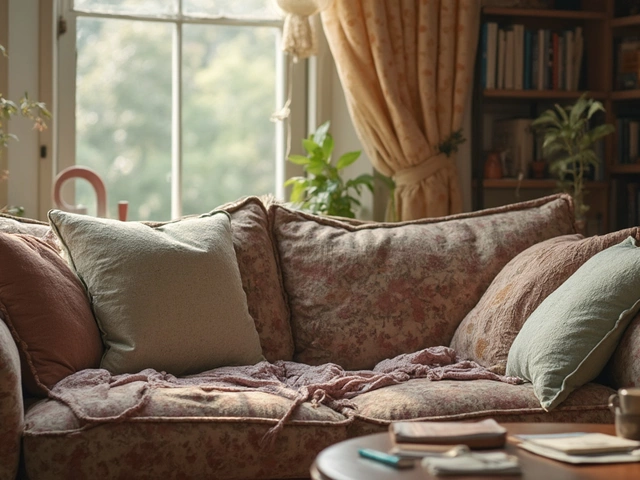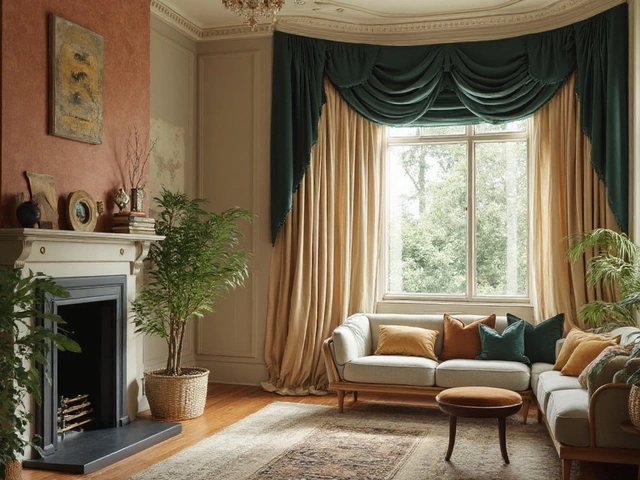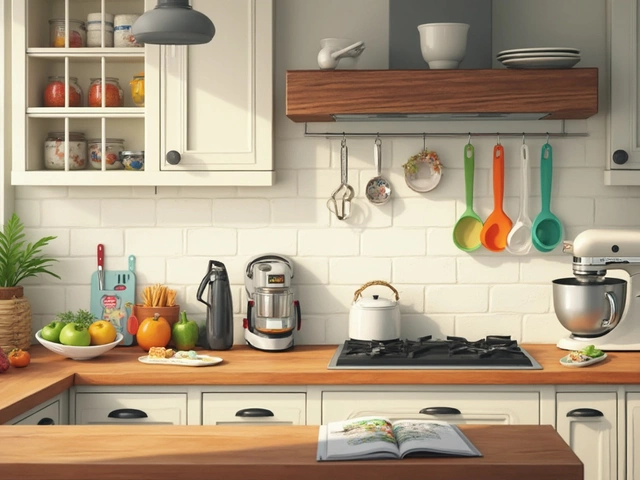Bedding Type Selector
Flat Sheet
Ideal for hotel-style looks and thick mattresses
Fitted Sheet
Perfect for quick setup and everyday use
Recommended Bedding Type
Ever stare at a pile of sheets and wonder why there are so many options? The biggest split in the bedding world boils down to two basic formats: the flat sheet and the fitted sheet. Knowing which one fits your sleep style, mattress size, and upkeep habits can turn a chaotic closet into a tidy, cozy retreat.
Quick Takeaways
- Flat sheets lie flat on the mattress and are easy to tuck under.
- Fitted sheets have elastic corners that hug the mattress for a snug fit.
- Choose flat sheets if you love a crisp, hotel‑style look and frequent sheet changes.
- Pick fitted sheets for hassle‑free bed making and stay‑put coverage.
- Both types pair with pillowcases, duvet covers, and other accessories to complete a bedding types set.
What Is Bedding?
Bedding is the collection of fabric items that cover a mattress and provide comfort, warmth, and aesthetic appeal while you sleep. It typically includes sheets, pillowcases, blankets, and protective layers. Bedding not only affects how you feel at night but also shapes the visual vibe of a bedroom.
The Two Core Types: Flat Sheet vs Fitted Sheet
Flat sheet is a single rectangle of fabric that rests on top of the mattress without any elastic edges. It’s the classic hotel‑style top layer. You can tuck it under the mattress at the foot of the bed or let it hang loose for a relaxed look.
Fitted sheet is a sheet with elasticized corners that stretch to hug the mattress. This design keeps the sheet from shifting, making bed‑making quicker and smoother.
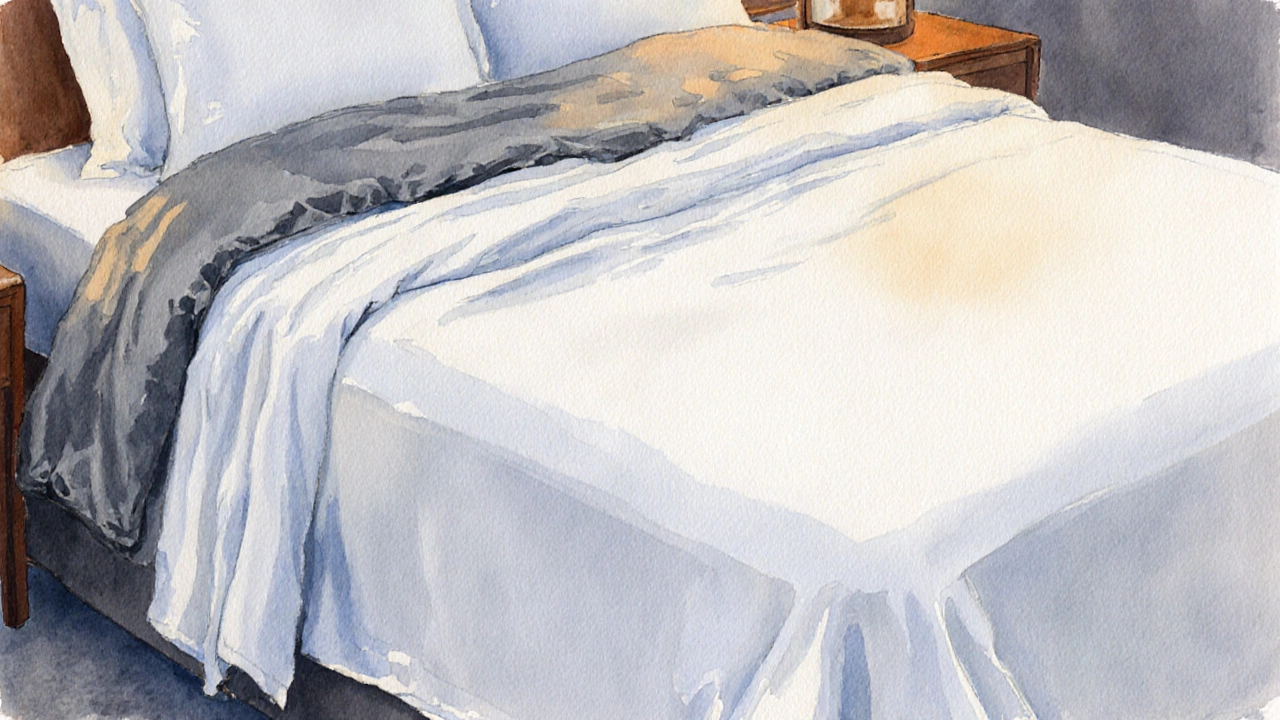
Flat Sheet: When It Shines
Flat sheets excel when you want a crisp, layered look. Because they’re just a flat rectangle, you can easily fold the top edge over a blanket for a decorative edge - a trick often seen in upscale hotels. They also work well with thicker mattresses where elastic might not stretch enough to hold a snug fit.
However, flat sheets need a bit more effort to stay in place. Tucking them neatly under the mattress at the foot and sides creates a tidy, “hospital‑corners” finish, but it can be time‑consuming if you’re in a rush.
Fitted Sheet: The Low‑Maintenance Hero
If you hate fussing with corners, a fitted sheet is your best friend. The elastic band wraps around the mattress, meaning you just pull the sheet over the corners and it’s good to go. This is especially handy for frequent laundry cycles, kids’ rooms, or any scenario where the bed gets made and unmade multiple times a day.
One downside is that a fitted sheet may not stay perfectly flat on very deep or unusually shaped mattresses. In those cases, you might need a “deep‑pocket” version or an extra‑long sheet.
How to Choose the Right Type for You
- Mattress depth: Measure the height from the surface to the base. If it’s over 15cm (6in), look for deep‑pocket fitted sheets; otherwise a standard fitted sheet will work.
- Personal habit: Do you love making the bed with hospital‑corners? Go flat. Prefer a quick toss‑on? Choose fitted.
- Climate: In hotter regions, a flat sheet adds a breathable layer you can pull up at night. In cooler zones, the fitted sheet’s snugness helps retain warmth.
- Style preference: Flat sheets allow a decorative fold‑over; fitted sheets give a seamless look without extra fabric.
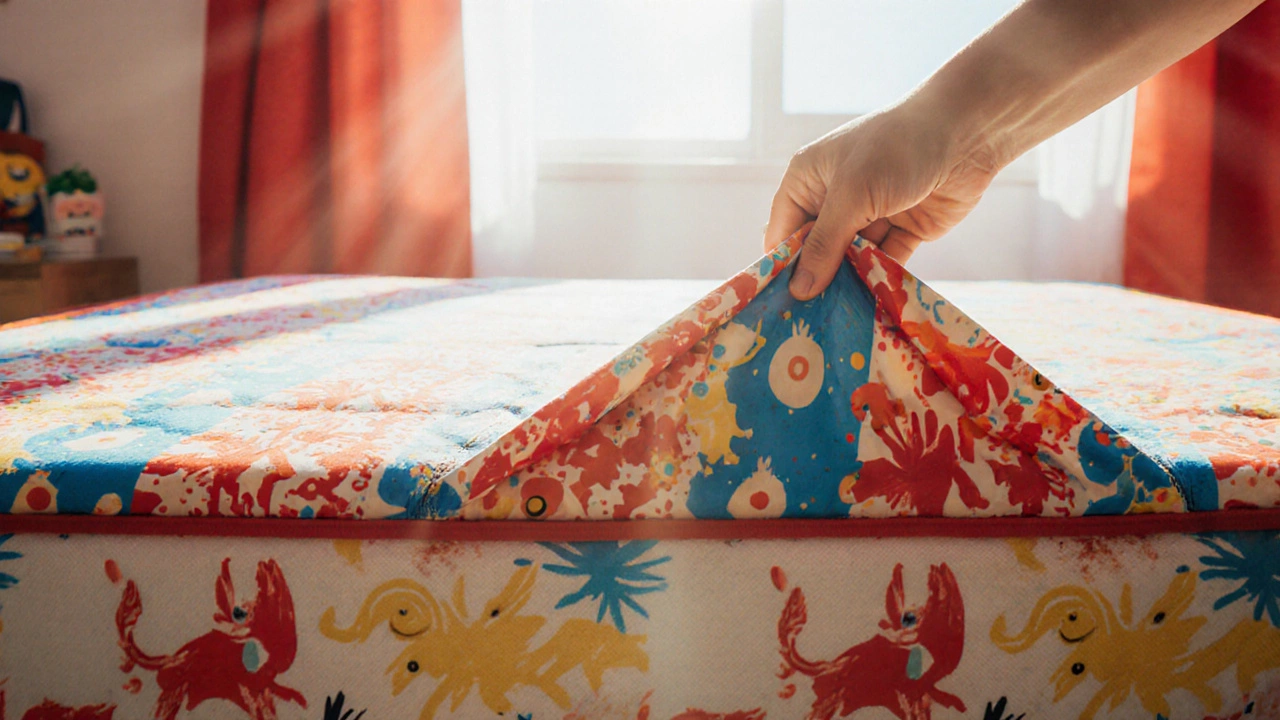
Other Essential Bedding Pieces
Regardless of the sheet type you pick, a complete set usually includes a few additional items:
- Pillowcase - protects pillows and adds a coordinated visual element.
- Duvet cover - encloses a duvet or comforter, providing easy‑wash protection and style.
- Mattress protector - a thin waterproof layer that extends the mattress lifespan.
- Sheet set - usually bundles a flat sheet, fitted sheet, and pillowcases in matching fabrics.
- Bedspread - a lightweight top layer used for decoration and modest warmth.
Each piece contributes to the overall comfort and durability of your sleeping environment.
Care & Maintenance Tips
Proper care keeps both flat and fitted sheets feeling fresh:
- Wash in warm water (40°C / 105°F) to remove oils without shrinking.
- Avoid heavy detergents; they can break down fibers over time.
- Dry on low heat or line‑dry to prevent elastic loss in fitted sheets.
- Iron flat sheets on a medium setting for a crisp look; skip ironing fitted sheets unless you want a perfectly smooth surface.
- Rotate sheets every few weeks to even out wear.
Comparison Table: Flat Sheet vs Fitted Sheet
| Feature | Flat Sheet | Fitted Sheet |
|---|---|---|
| Fit | Lay‑flat; requires tucking | Elastic corners hug mattress |
| Setup Time | Longer - tucking corners | Quick - pull over corners |
| Best For | Hotel‑style look, thick mattresses | Everyday use, kids’ rooms |
| Style Flexibility | Can be folded over blankets | Seamless, no extra fabric |
| Durability | Less stress on seams | Elastic may wear over time |
Frequently Asked Questions
Do flat sheets and fitted sheets serve the same purpose?
Both protect the mattress and provide a sleeping surface, but a flat sheet sits on top and can be tucked, while a fitted sheet wraps around the mattress to stay in place.
Can I mix a flat sheet with a fitted sheet set?
Yes. Many people buy a fitted sheet for a snug base and add a flat sheet for extra warmth or a decorative layer.
How do I choose the right size?
Measure the mattress length, width, and depth. Then match those dimensions to the sheet specifications (e.g., Twin, Full, Queen, King, Deep Pocket).
Are there health benefits to using a fitted sheet?
A fitted sheet stays tightly against the mattress, reducing the chance of dust mites gathering in loose folds. Pair it with a mattress protector for optimal hygiene.
What fabric is best for summer?
Lightweight cotton or linen blends breathe well and keep you cool. Look for a thread count around 200‑300 for a balance of softness and airflow.

